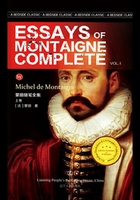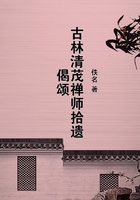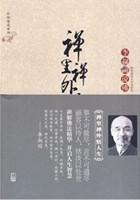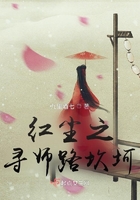Nurses arriving in Manila, July 1941. Front row, left to right: Mr. Anderson, Madeline Ullom, Captain Seamon, Commander Cotter, and Ethel Thor. Back row: Juanita Redmond, Sue Downing, Adele Foreman, Clara Mueller.
JULY 1940
Manila, Philippine Islands
Ethel Thor stood breathless at the rail of the USS U. S. Grant sailing into Manila Bay. The ship slipped past Corregidor Island, revealing great battleships and tiny fishing boats anchored in the harbor. Brilliant blue sky reflected in the deep water. Rugged purple peaks rose to the north. Lush jungle sprawled over the hills and down to the shell-white sand and the lapping surf.
A tall redhead with hazel eyes, Ethel had grown up an orphan in Tacoma, Washington, living with an older sister after her parents died. Quiet, well liked, and hardworking, she had a streak of independence that led her to join the U.S. Army Nurse Corps (ANC). Her voyage on the military troopship had taken twenty-eight long days across the Pacific. Now here she was-one of six women on a boatload of soldiers eight thousand miles from home-about to go ashore in the Philippine Islands, a tropical wonderland.
Ethel's dress clung to her skin in the tropical heat. She wrinkled her nose at the smell of seaweed and dead fish but gazed in wonder at the city. Grand homes encircled Manila's harbor. Coconut palms swayed along shoreline avenues and shaded the grand Manila Hotel. Cathedral spires and Fort Santiago rose from Manila's colonial walled city.
While Ethel cruised into Manila Bay in July 1940, much of the world roiled with conflict. Germany had crushed most of Europe by using a new war tactic called blitzkrieg, where troops, tanks, and airplanes all attacked at once. Now Nazi leader Adolf Hitler prepared to blitzkrieg England. In the Far East, Japan was on the march. The previous month Britain had ordered the evacuation of all British women and children from Hong Kong, fearing Japan would capture the city. The only democratic powers left in the world were the United States and Great Britain.
But war seemed far away to Ethel Thor as the U. S. Grant powered toward Manila's piers. A crowd waved from the dock. An Army band in white uniforms struck up a lively tune with their shining brass instruments. Ethel and five other Army nurses went ashore dressed in heels, nylon stockings, and gloves. Greeted by their new leader, Miss E. Valine Messner, the chief nurse of the Philippine Command, they were given corsages in a brief welcoming ceremony.
The next day, Ethel reported for duty as a scrub nurse in the operating room at the U.S. Army Sternberg General Hospital in downtown Manila. She slipped easily into the routine of surgical cases-mostly officers' kids having tonsils or appendixes out, or wives in childbirth. Except for one area set aside for Filipinos, medical cases at the 450-bed hospital were U.S. military personnel or their dependents. The hospital also served retired U.S. military personnel and their families who lived in the Philippines, but aside from contracting the occasional tropical fever or parasite, military families were young and healthy.
Duty was light compared to the twelve-hour shifts Ethel had worked in civilian hospitals and at her prior station at Letterman Army Hospital in San Francisco. Since the hot, humid weather could be tiring for people from the States, nurses worked only four hours on the day shifts. They rotated through eight-hour shifts in the cooler temperatures overnight.
A U.S. Army nurse attending a patient, Camp Forrest training base in Tullahoma, Tennessee, 1941.
The women enjoyed a casual, resort-like atmosphere in their quarters at the rear of the hospital. Mahogany fans cooled the rooms, drawing the fragrance of gardenias in through the open windows. Outside, purple bougainvillea and yellow plumeria bloomed. Orchids grew everywhere, like dandelions in Ethel's home state of Washington. Hired Filipinos did the laundry, cooking, and cleaning. A servant often served meals.
The only dilemma facing Ethel and the other young nurses was choosing free-time activities. Go to the beach? Visit peaceful palm groves or mountain forests? Take in the fascinating Philippine culture? Many learned to play golf, tennis, or badminton. In the heat of the day there was bowling, movies, or shopping. And, of course, there were scores of young American men-Navy sailors in white tunics and trousers, and Army soldiers, stand-up-straight spiffy in their khakis.
The sailors came into Manila on leave from Cavite Naval Shipyard, visible a short distance across the water on Cavite Peninsula. The soldiers hailed from four nearby Army posts-Fort William McKinley, seven miles south of Manila; Fort Stotsenberg, adjoined by Clark Field roughly seventy miles north of the city; Fort Mills on Corregidor Island, a short boat trip across the harbor; and Camp John Hay in the cool, pine-scented northern mountains near the village of Baguio. Military nurses lived and worked at each site.
Ethel discovered that American women were popular at the Manila Army-Navy OC (Officers' Club). They could walk the short distance from Sternberg, beat the heat with a dip in the pool, or relax on the veranda and sip icy drinks. Uncle Sam provided plenty of partners for dinner and dancing. The young women talked and laughed while the sun set and danced while the moon rose.
"Each evening we dressed for dinner in long dresses. The men dressed in tuxedos, dinner jackets with the cummerbunds," said Army Nurse Earlyn "Blackie" Black, stationed at Fort Mills on Corregidor. "It was a very formal type of living. Even to go to the movies, we'd put on long dresses."
Ethel had dropped out of high school at seventeen and moved into St. Joseph's Hospital and School of Nursing in Tacoma. Nursing students worked long hours for low pay, but upon graduation they could earn enough to support themselves. That appealed to Ethel. Her quiet, capable manner and caring instincts made nursing a good fit for her.
During the Great Depression, Ethel worked as a nurse for the Civilian Conservation Corps at Fort Lewis, near Tacoma. When one of the Army doctors suggested she join the Army Nurse Corps, it seemed a no-brainer-a guaranteed job with good pay. She went back to school at night to earn her high school diploma, then enlisted in the ANC in 1938.
Ethel Thor (in white skirt) takes friends on a picnic and a drive to the famous bat cave at Montalban Gorge, Luzon. From left: Army nurses Frances Nash (sitting), Ruby Motely, Ida Pecshon, and Clara Mueller. January 1941.
U.S. Navy men relax and dance with their dates in a hotel ballroom shortly before the Japanese attack on the Philippines. Manila, November 1941.
JULY–NOVEMBER 1941
A YEAR AFTER ETHEL ARRIVED IN THE PHILIPPINES, U.S. Army brass named General Douglas MacArthur to lead a newly formed command in the Philippines. Filipino-American forces included U.S. Army troops, thirty-one thousand strong, and one hundred and twenty thousand Philippine men. Ethel didn't know that MacArthur expected Japan to attack the Philippines. She didn't know Japan was churning out Mitsubishi Zero fighter planes-faster, more maneuverable, and with bigger guns than any planes Americans had ever seen.
Army nurses Floramund Fellmeth (left) and Hattie Brantley arrive at Fort McKinley, July 1, 1941.
That summer and fall, the number of troopships arriving in Manila carrying U.S. soldiers, military equipment, and nurses more than tripled. Thirty more Army nurses came, including Mildred "Millie" Dalton from Georgia. She was one of eighty-eight Army nurses now stationed on Luzon. Like the others, she wore a white dress and cap for work, the same as her former civilian uniform except for the small military badge on the collar. Her duties in the peacetime service remained similar to the work she'd done in civilian life. U.S. military nurses had only relative rank, which meant they had no military title but were addressed as "Miss." Nothing in her training had readied her to work in a war zone.
"There was no way in the world we were prepared for war," Millie said, "or even told anything about being prepared for war."
U.S. NAVY NURSES ALSO ARRIVED IN MANILA that fall.
Nurse Margaret Nash had supervised surgery for two years in the U.S. Naval Hospital on the Pacific island of Guam. Margaret-Peggy, to her friends-was making plans to leave the Navy. She'd fallen in love with a naval officer, and military nurses could not be married.
"Ed was the executive officer on the USS Penguin. We went together for about seven months and got engaged to be married. And from then on our lives were just a ball."
Peggy had long showed a spirit of adventure. Few girls where she grew up near Wilkes-Barre, Pennsylvania, would have finished nursing school and gone on to graduate work. Fewer still would have volunteered on a Coast Guard cutter during the St. Patrick's Day Flood of '36, the worst flood of the Susquehanna River Valley in known history. Peggy's uncle, a congressman surveying the rising waters, ran into her one day.
"What are your plans?" he asked.
"I don't know," Peggy answered.
"How would you like to join the Navy?" her uncle asked.
Peggy didn't hesitate. "Sure, I'd love it, but don't tell my mother."
Several years after joining the U.S. Navy Nurse Corps, Peggy got orders to the Guam Naval Hospital. One day in October 1941, the chief nurse interrupted Peggy in surgery. "You'd better let your senior nurse take over. Your orders are in," she said.
"Well, why don't we finish this operation?" Peggy asked.
Front row, left to right: T. Metcalf, Ruth Anthony, Katherine Yarnell, and Martha Smith. Back row: Ann Bernatitus, Mary Chapman, Jamie Taylor, Goldie O'Haver, and Dorothy Still, c. 1941.
"You don't have time," the chief nurse told her. "You have to be aboard ship in two hours… . You are being transferred to Manila."
Shocked, Peggy went to pack. It was her first inkling of trouble.
AS PEGGY NASH SAILED FOR MANILA, ARMY Nurse Rita Palmer left San Francisco, also headed for the Philippines. Rita reported to Fort Stotsenberg Station Hospital, roughly seventy miles north of Manila. For twenty-two-year-old Rita, the perks at Stotsenberg came dressed in standard-issue leather bomber jackets. These daring young pilots flew the new B-17 Flying Fortress bombers at nearby Clark Field. Many were handsome, single, and more than happy to see a girl from the States. Not to be outdone, soldiers from the fort's tank battalion took nurses for a ride in their armored vehicle. They were proud of their tank, like boys playing with a new toy.
Navy Nurse Peggy Nash, c. 1945.
Army Nurse Floramund Fellmeth rides the Army team mascot in Manila, November 29, 1941. The annual Army/Navy football game, always a huge social occasion, came just eight days before the enemy attack.
"We were in a strange and different country. We were excited by everything we did," Rita said. "I remember being told by pilots that they were flying into formations of Japanese planes, and they were concerned. But I don't think… we gave it a second thought."
AS RITA SETTLED IN AT FORT STOTSENBERG, Peggy Nash arrived at Ca?acao Naval Hospital, roughly twenty miles south of Manila. The hospital served the Cavite Naval Shipyard, visible a short distance across Ca?acao Bay on the Cavite Peninsula, about a half-mile walk by land. Peggy was one of twelve Navy nurses on duty there.
In March, six months before, the Navy had evacuated all military wives and children from the Philippines. Navy nurses at Ca?acao had been advised to send home any valuables. They practiced blackouts in case of nighttime air raids, and nurses were told to order supplies they needed to ready their wards for casualties. They made and sterilized hundreds of surgical dressings, equipped their wards with plasma, saline solution, IV equipment, suture material, adhesive, bandages, bandage scissors, and extra blankets.
But Peggy had just arrived. She hadn't been part of these preparations at Ca?acao. The first week of December, she went into Manila to make arrangements with a priest for her wedding. She and Ed had decided to marry on Valentine's Day. The Navy discharged women who married, and Ed's tour was almost done. She missed him terribly, but the USS Penguin would arrive soon.
"I had no idea there was going to be a war," said Peggy. "That's how naive I was."















